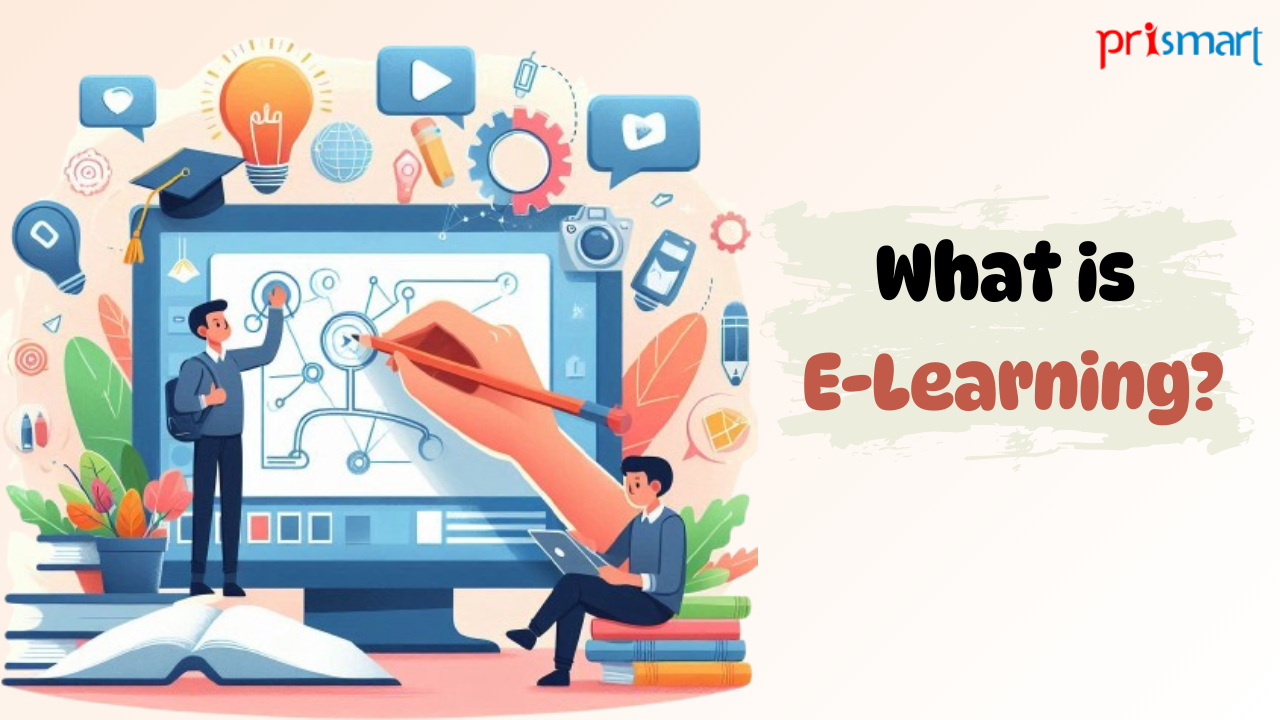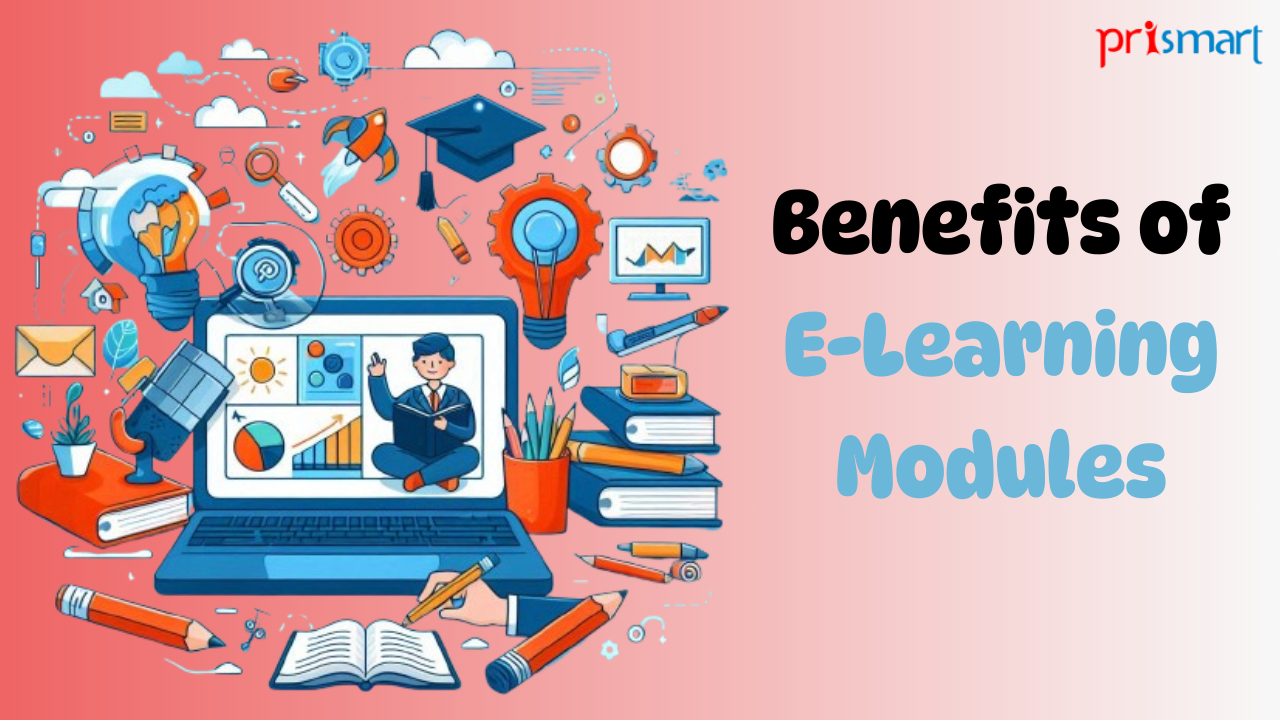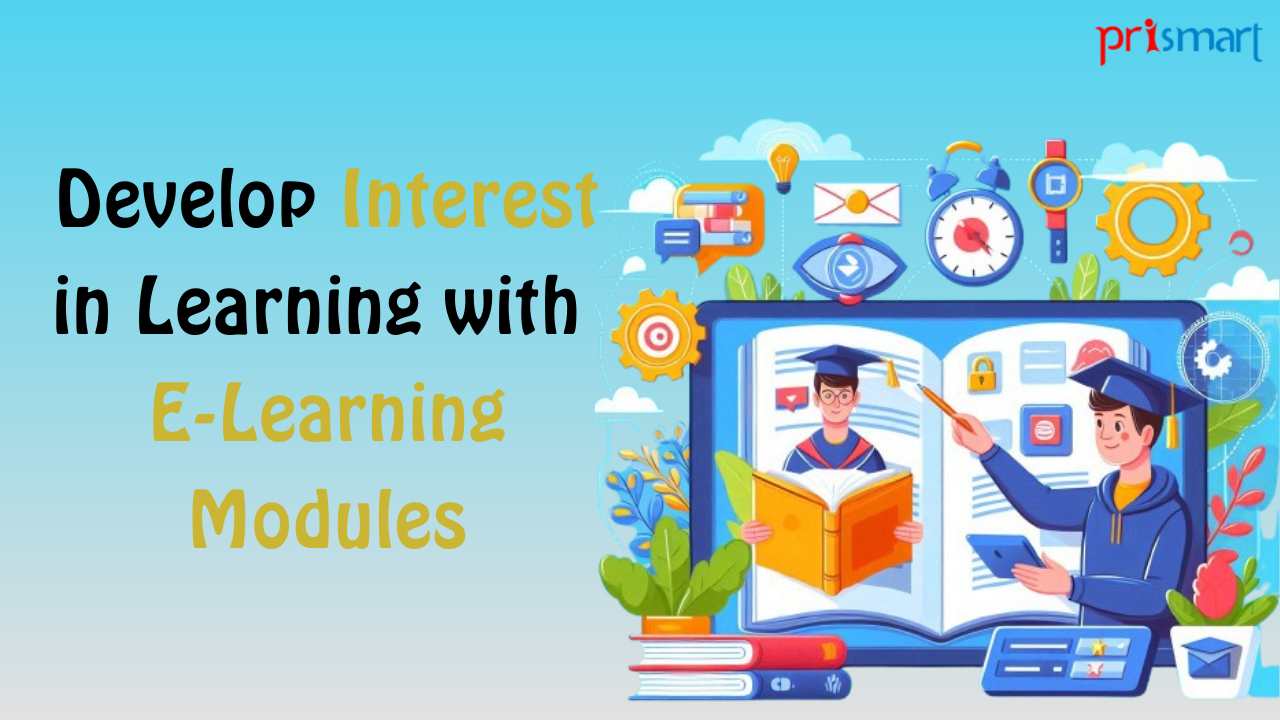The Growing Popularity of E-Learning Modules
With the evolution of digital learning, new methods of training and development are being adopted, striving to make it more engaging and results-oriented. One such method is implying 2D/3D animation to create short e-learning modules. These microlearning videos are quick to watch, capture attention instantly, and offer flexibility of learning at the learners’ pace.
According to a recent study, the average human attention span is just 8.25 seconds, less than a 9-second attention span of a goldfish. When concepts are visually presented through e-learning modules, viewers understand them better and retain them for a longer time period. Wyzowl, 2021 stated that “viewers retain 95% of a message when they watch it in a video compared to 10% when reading it in text.”
Let’s explore how e-learning modules in animation are the big hit for modern education, training, and development in this blogpost.
What is E-Learning?

E-Learning refers to the use of electronic media to train and educate students and staff. It is also called ‘Technology-enabled learning’ or ‘Distance learning’ and provides a range of solutions like e-books, e-learning videos, and e-learning capsules for anytime and anywhere learning.
E-Learning modules are the powerful tools of digital education in modern times due to their interactivity, flexibility, and accessibility. Let’s explore the ways e-learning modules can be used:
- Interactive videos for active participation of learners.
- Game-based quizzes to make learning fun.
- Animated infographics to simplify complex information.
- Microlearning clips (bite-sized modules) for learning on-the-go.
- Virtual Labs and Simulation for practical hands-on learning.
- Webinars and Live Virtual Classrooms for real-time, interactive sessions.
- Interactive PDFs with embedded videos and quizzes.
E-Learning Modules
Structure of an E-Learning Module :
An e-learning module answers the Why, What, and How of a concept.
At the first part of an e-learning module, the instructor should begin by stating to the audience why they should listen to you. How is it going to help them in any way? Make sure you have a compelling and engaging opening for your video to entice the audience and generate their interest.
In the second part of the video, share the credibility of your statements. Cite examples, graphics, images, and data to support your e-learning module and evoke an emotional response from the audience.
In the third part of the video, state a call-to-action by inspiring learners for learning, leading to personal and professional development.
Benefits of E-Learning Modules

Attention and Engagement: With plenty of digital learning resources available from all sides, it is important to give learners something unique and interesting. Animated short learning modules serve as a powerful tool to present visually engaging stories that instantly grab attention and engage students.
Enhance Understanding: Animation presents concepts into engaging and dynamic visuals that static text can’t. By combining audio-visual elements, microlearning videos make it easier for learners to grasp difficult topics, enjoy learning, and also remember what they’ve learned.
Simplifies Content: With the power of 2D and 3D animation, complex topics can be broken down into easy-to-understandable chunks of information. This makes difficult subjects more comprehensible, increases conceptual clarity, and fosters enthusiasm for learning.
Emotional Connectivity: Animated characters and narratives have a unique ability to evoke emotions, making the learning experience more personal and impactful. Short learning modules lead to deeper understanding, a smooth user experience, and a greater appreciation for the content.
Flexible Learning: Animated videos for e-learning give learners flexibility of learning at their own pace. These modules can be paused, rewinded, and replayed any number of times at any place, device, and hour of the day.
Tips to Effectively Use Animation in E-Learning
Higher Interactivity: To give your users a more interactive learning experience and encourage active participation, integrate elements like quizzes and drag-and-drop activities in e-learning content.
Smooth Optimisation: To give your learners a seamless learning experience, ensure the e-learning content is responsive and performs well on multiple devices such as desktops, tablets, laptops, and smartphones.
Maintain consistency: Be consistent in your visual style of animation and throughout the e-learning course. This will build viewers’ confidence and exhibit your professional approach towards e-learning modules.
Emerging Technologies in E-Learning
As technology continues to advance, we have seen some innovative uses of animation in e-learning.
- VR in e-learning to give a virtual learning experience.
- AR integration for real-time learning experience.
Choosing the Best E-Learning Company in India
Animation is a powerful tool of storytelling. By leveraging the power of animation, you can create stunning visual narratives to explain a concept or a procedure. These e-learning modules are easy to digest, fun to watch, and stay in your memory for a long time.
Prismart Productions is a leading e-learning studio specializing in all types of e-learning animation, such as corporate training, digital learning, product and service marketing, and health and safety training. We are known for our high-quality animation, engaging content, cost-effective solutions, fast TAT, and transparent communication. Moreover, we specialize in drafting tailor-made solutions to serve clients’ purposes and meet their expectations.




